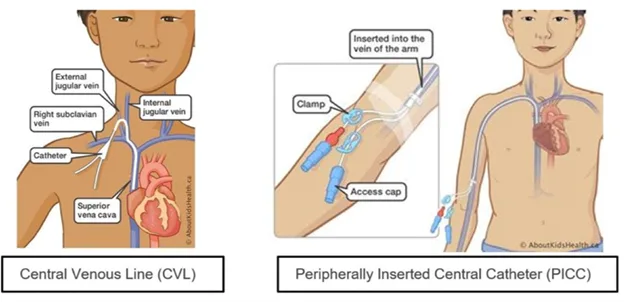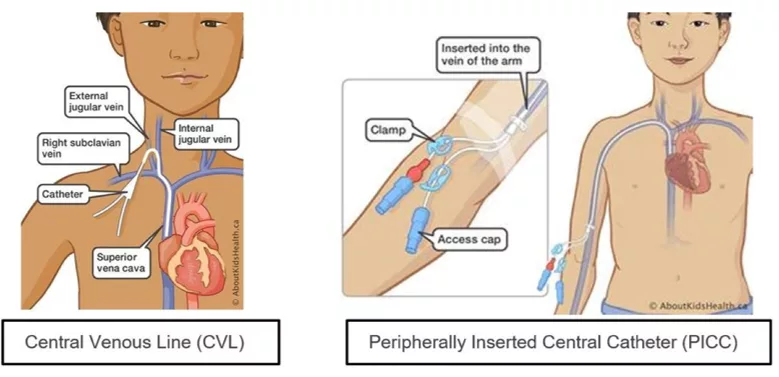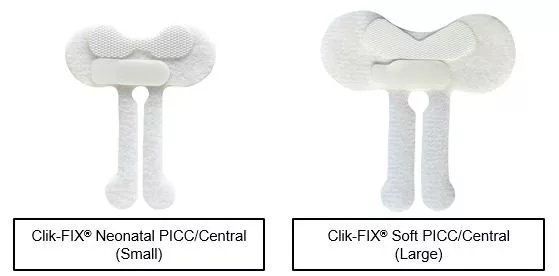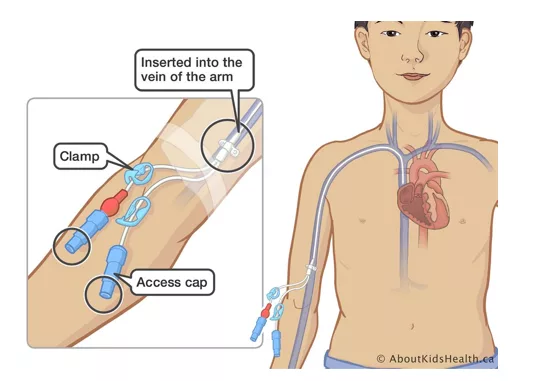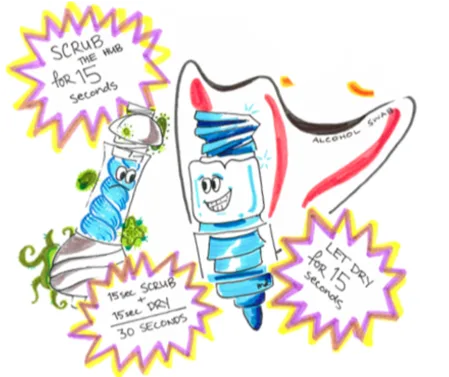SITUATION:
Children may be discharged from hospital to the community with a central venous access device (CVAD) for intravenous medication/fluid administration. Care for a CVAD may include flushing, heparin locking and/or bloodwork. A potential risk of having a CVAD is developing a Central Line Associated Blood Stream Infection (CLABSI).
BACKGROUND:
Asepsis refers to the absence of pathogenic organisms to cause an infection. When performing any procedure with a CVAD, it is important to maintain asepsis by following the principles of Aseptic Non-Touch Technique (ANTT™) to prevent contamination of key parts and key sites by microorganisms that could cause a CLABSI.
In ANTT ™, asepsis is ensured by identifying and protecting key parts and key sites by routine practices (e.g. hand hygiene), non-touch technique, and using a surface and equipment that is aseptic or can be cleaned to a standard that renders it aseptic prior to use.
RECOMMENDATION:
- When cleaning or accessing a CVAD for flushing, heparin locking or bloodwork, best practice is to always keep the CVAD cap on and attach syringes directly to the cap. The cap on a central line protects a key site where bacteria can potentially enter the bloodstream and cause a CLABSI.

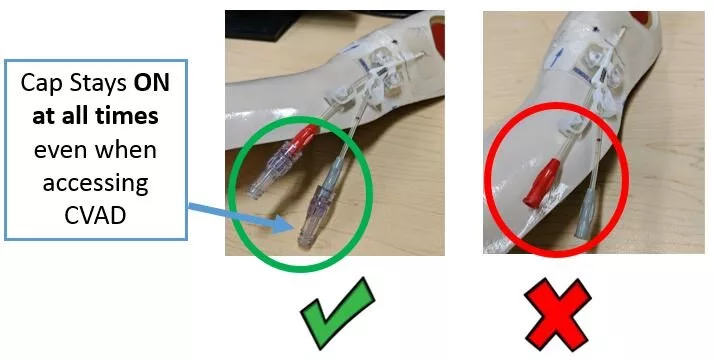
- Prior to attaching a syringe to the cap, remember to scrub the cap vigorously with an alcohol swab for 15 seconds and let it dry completely for 15 seconds.
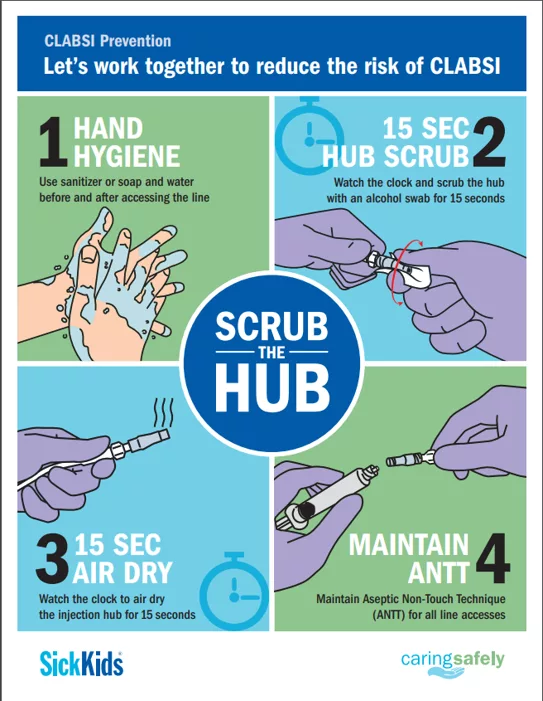
- Caps are routinely changed every seven days in the home and community setting using ANTT ™. Refer to the following article for more detail: CVL/PICC cap change


